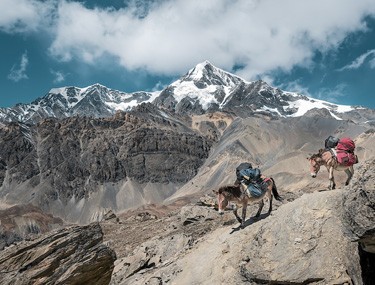Corona Virus outbreak in Nepal
While Nepal shares a border with China in the north and Chinese being the second-highest number of tourist visiting Nepal, Nepal was regarded to be the high-risk country for Corona Virus pandemic outbreak. The first case of the Coronavirus pandemic in Nepal was reported on 24 January 2020 in Kathmandu. The patient was the Nepalese student from Wuhan University who had returned on January 9 to spend winter holidays in Nepal who was admitted with mild symptoms on 13th January and discharged on 17th January with instruction to self-quarantine at home after preliminary tests. The follow-up assessment of the patient on 29 and 31 January, the result turned negative.
On 17 January, urged by the WHO, Nepal began screening passengers arriving in Tribhuvan International Airport from China, Thailand and Japan as these three countries had multiple emerging confirmed cases. On 28 January, Nepal closed down the Rasuwagadhi border with China whereas medical personnel were deployed to various check posts along with the bordering districts to India and reported to be in high alert. On 16 February, the government evacuated 175 Nepalese citizens from Hubei and placed them into 14-days quarantine at Kharipati, Bhaktapur who was released after 14 days after all negative tests. By the end of February, the government also decided to suspend promotional activities for Visit Nepal 2020. By the beginning of March furthermore country such as Italy, South Korea, France, Japan and Saudi Arabia got infected by this novel infectious disease.
The number of positive cases increased worldwide which alert Nepal government. On 1st March, Nepal government made an announcement on suspension of on-arrival tourist visa service for nationals of five countries badly affected by Coronavirus- China, South Korea, Italy, Japan and Iran- to be imposed from March 7 to March 30. For precaution against this infection, the government also urged the general public to avoid large gatherings. The Supreme Court issued an interim order to suspend flight flying to and from countries infected by COVID-19. The government made it mandatory for visitors coming from or via these countries to submit a health certificate at the entry point. On 9th March, the government expanded the suspension of on-arrival tourist visa service adding three more countries- France, Germany and Spain in the list, with an exception to diplomatic and official visas, to last from 14 March to 30 April and also closed land border entry points for third-country nationals. The government also suspended all labour permits for new worker leaving Nepal for employment in different countries and issuance of no objection letters to students applying for abroad study until 30 April. On 18th March the government declared the closure of all the academic centres such as schools and colleges and postponement of all academic examinations. The government also announced the close down all cinema halls, gymnasiums, museums and cultural centres, and prohibited gathering of more than 25 people in any public spaces. The government declared to prohibit all passengers, including Nepalese, from Europe, the United Kingdom, West Asia, Malaysia, South Korea and Japan to entry Nepal which came into effect from 20th March until 15 April. Nepal began to see a significant influx of people from India to Nepal as India saw an increase in new cases throughout the country. Nepal later decided to close all international flights from 22 March to 31 March and vehicular movement on long routes to close from 23rd March. To combat the diseases, the government enforced health service providers to add ICU and isolation beds and halt non-urgent health check-ups and surgeries until 12 April in the hospital in Kathmandu valley and established the quarantine at the different part of Nepal from people who travel to Nepal.
On 23rd March, Nepal has second confirmed positive COVID-19 case in a 19-year old woman who had returned from France on 17 March via Qatar. She was admitted into isolation at Teku Hospital and her family members were kept in-home quarantine. In comparison to other countries, Nepal has still least infected by a Coronavirus which made the Nepalese return to the homeland to prevent themselves from this high risk of getting COVID-19. The inflow of Nepalese arrival became higher with the announced government to lock down the country soon. The increase in the inflow of Nepalese people from a different country infected from COVID through land and air before the country-wide lockdown created the major risk in the country. The country-wide lockdown came into effect from 24th March. The third case of COVID-19 was confirmed and the patient was Nepalese who had recently returned from the United Arab Emirates. Any day passing one, the number gradually kept on rising. The fourth case confirmed case a 34-year-old man who had recently returned from the United Arab Emirates. The five confirmed case a 19-year-old woman who recently travelled from Belgium and sixth cases was a 65-year-old woman who was on the same flight as a 19-year-old woman travelling from Belgium. The three new positive cases were confirmed in the far-western region of Nepal who returned from Nepal from different part of India. On 11th April three Indian national residing in Parsa tested COVID-19 positive. On 17th April, 12 more Indian nationals from Delhi who had been quarantined in Udayapur were tested positive. By 23rd April, there were 20 more positive cases was confirmed in Udayapur making this district the high infection region of Nepal. On 26th April, two cases were confirmed in Parsa district, on 28th April, two cases were confirmed in Rautahat district and on 29th April two confirmed cased were identified in Birgunj bringing the total cases to 57 in Nepal.
Nationwide Lockdown
With the news of the increase in the number of positive COVID-19 cases which has terrified the nation. On the other hand, the recovery cases of a 19-year-old woman from France and 65 years old woman from Belgium has created some positivity among people. Since, the increase in the number of COVID-19 cases and the risk of life, the government has kept extending the country-wide lockdown. The country has been under lockdown since March 24. With the rise in coronavirus cases, the government extended the ongoing nationwide lockdown until April 15. With more 16 more positive cases the nationwide lockdown was extended to 27th April. On 26th April, the Nepal government added an extra 10 days to the extended lockdown period. The lockdown has led to postponement and cancellation of several religious, cultural, political and sporting events in Nepal. During the lockdown, Nepalese had to miss the Nepali New year celebration and widely celebrated Bisket Jatra and mother days. Even the greatest celebration of Buddha Jayanti which falls on 7th May also has been cancelled. It’s not only Nepal that is facing severe socioeconomic disruption from lockdown; the most of the part of the whole world is facing similar problems because of COVID-19 pandemic and are terrified of the risk and loss of life. We all hope to recover soon and combat this crisis and get back to our normal lifestyle.
Government Preventive measures
The government of Nepal has implemented several measures such as travel restriction, flight suspension, quarantines, and proper workplace hazard controls. Only essential services like health, security, food supply, water supply, dairy, electricity, telecommunication, news and information, customs, quarantine, waste management were open for operation. The banks were open with only a few essential staff for public support. All the industries except those engaged in health, water and food supply were given leave. The government has also taken major steps to control the risk of hoarding and an artificial shortage of essential drugs and medical supply and energy supply during this time. The government has encouraged every individual to follow the preventive measures which include hand washing, drinking warm water, covering one’s mouth when coughing, maintaining distance while in public, and self-isolation for people who suspect of infection. All health services are instructed to be on high alert to combat any dangerous situation.
The nationwide lockdown has again been extended to 7th May, yet the end date of lockdown is still not confirmed. Every citizen is waiting on government call to end the lockdown soon hoping the restart their normal day to day work but still, people are terrified of this infectious virus as still no known vaccine or specific antiviral treatment has been identified yet.
Conclusion
However, we should not fail to acknowledge, there are more than million cured cases of infected people recorded on May 3 and some recovering and returning home from the hospital worldwide which is also a good positive sign. Nepal being the tourism-oriented country its economy has been greatly affected by Coronavirus pandemic. We all hope to recover from this unforeseen circumstance in the coming future. We can hope that with major protections and preventive measures put into action we could overcome this Global Health Emergency sooner.


